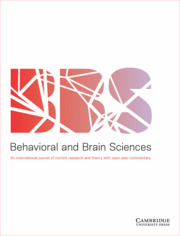Article contents
The developmental mechanisms and the signal functions of early infant crying
Published online by Cambridge University Press: 14 February 2005
Abstract:
The majority of the commentaries focused on excessive crying and colic and included two major themes: the consideration of proximate physiological mechanisms, and challenges to my interpretation of the signal functions of early infant crying amount. I initially concluded that none of the competing signaling hypotheses enjoyed strong support, but I nevertheless favored the signaling vigor hypothesis above the signaling need and manipulation hypotheses. Consideration of the neurobiological causation of the n-shaped crying curve and further evidence and argumentation concerning the potential signal functions, however, do not allow for the elevation of any one of these hypotheses above the others, and it remains the case that none are strongly supported. Taken together, however, the target article and commentary do provide a solid foundation for further research. In the target article, I also proposed a model of how infant cry acoustics can influence patterns of care and abuse. Commentary has enriched this model by including the consideration of developmental changes in cry acoustics across early infancy, and by further integrating the cry signal with other modalities of communication and with later development. I trust that the foregoing will show that the joint pursuit of the proximate mechanisms and the potential signal functions of early infant cry amount and cry acoustics should prove fruitful. Before embarking on my reevaluation, however, I begin this response by addressing the issue of consciousness in evolutionary accounts of signaling.
Information
- Type
- Authors' Response
- Information
- Copyright
- Copyright © Cambridge University Press 2004
References
- 5
- Cited by

